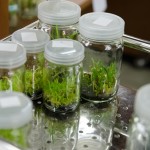
GIS is fast becoming the tool to use for sustainability and planning as we seek to maximise the efficiency of the environment around us and protect what needs to be protected while maintaining health and jobs in the modern economy. People who work in Sustainability know that many disparate elements must come together in order to keep the mechanics of the world around us functioning in the way we want it to function; today, this includes the ecology.
Why is GIS so great? Because of its integrative power and ability to bring together so many data sets into one simple to use graphic and database format (1), its egalitarian presentation and its ability to make the complex appear straightforward. What's more, it is quick and easy to compile, manipulate and present to a broad range of stakeholders. A conservationist will need different information from a civic planner who will need different information from a solid waste management consultant, who would need different information from business leaders and so on. Yet all of these groups may be drawing on the same data sets.
Because of the research-intensive nature of GIS, there are presently no dedicated undergraduate degrees in the US. However, the growing importance of the discipline means that most good colleges and universities will offer an option to study it as a minor or elective. If you are planning to study a degree in Sustainability then we strongly recommend taking the option where available. Most Sustainability jobs may not expect you to have the skill straight after you graduate, but within a couple of years it is highly likely to be a requirement. For specific GIS Technician jobs related to Sustainability, a Master's Degree will be essential.
GIS allows those who work in Sustainability to work with relevant authorities and bring them together against conflicting interests. Research becoming a GIS specialist.
How GIS Helps Global Sustainability
Sustainability is one of the trickiest and most difficult environmental disciplines to tackle because of the disparate nature of the stakeholders and the often competing interests of their relevant areas (2, p516-7). Sustainable development at its essence brings together three components: environment, public health and economy (1). There are already many projects around the world where GIS and digital mapping is being used to manage competing interests, particularly in developing nations where environmental protection of delicate ecosystems is key to public health, but development is key to economic growth (2, p516) and sometimes these things are in conflict. Most importantly, GIS maps are interactive and for the end user, a visual image is the best output (3, p1). Not only can we manage sustainability with GIS, but in turn it is also helping us to see the individual needs of the various ecosystems around the world (4).
- Island economies can be particularly delicate. One good example of where GIS has been used effectively is with The Conservation Trust of Puerto Rico which was formed in 1970 to manage the delicate ecosystem of the island while promoting education and research. The trust saw the need for a GIS unit which it founded in 2003 (3, p5-6). The project has been highly successful in managing the elements of the island's ecology.
- GIS has helped different nations manage aspects of natural features where they cross borders. Rarely does a desert or a rainforest or a river, large lake or mountain range halt at a national border. Working together to promote sustainability against differing national economies and politics while assisting scientific establishments to collaborate for the common good (5) is easily managed with a consultative GIS system.
- “Marginal lands” are those areas that are economically of low value - this can apply to areas with low resources that are agriculturally poor or are limited to a single low-value resource. Calling it a “marginal landscape” is an economic indicator of its resource value only; it may have high ecological or conservation value, or it may be high in one particular resource that an economy needs but is not lucrative (6, p1). Managing the resource requires careful consideration in order not to over-exploit it or to affect local health or damage the delicate ecology. A great example of this are wetlands.
- GIS is helpful in bringing together various groups to discuss their differing requirements. In Colorado's North Front, there are no less than 13 separate governments and the North Front Range Metropolitan Planning Organization produces data on the air quality and transportation network to each so that they can best manage their individual environments (3, p15). This can be especially difficult where policies in one area are counterproductive to those in another area but where co-operation is necessary for something like transport policy.
- We can expect the human population to continue to expand, meaning growth of existing urban centres and the building of new ones while respecting existing and future conservation law to protect the environment in tandem with human development. The elements we need to consider include: past and present demographic data, estimates of population change to properly plan resources, the effects of climate change on those areas, future habitat change and the effects and needs of local wildlife and their habitats (7).
Example Case Study: Biomass Planning
Much of the southern states are leading the way in biomass production thanks to the large amount of natural open space and economy built on agriculture. As the world looks towards a sustainable post fossil fuel future, we are going to need a lot of agriculture space to grow biofuels and to develop an efficient system of planning, production, transport and disposal. GIS has been the backbone of a programme in 27 counties across 13 states for many years (3, p23). From Florida in the south to Virginia in the north to Texas and Oklahama in the west, these states are responsible for such biomass resources as wood pulp and other forest detritus. It requires careful planning, taking into account transport costs and the importance to local economies while respecting the environment, keeping emissions down while catering for the country's energy needs.
Until the use of GIS, extra costings such as transport infrastructure and accessibility were difficult to factor in - especially in a volatile market. Conventional mapping looks at the average of a straight line radius and then calculates the average production of an area. Arguably, this fails to account for the volatility of transport costs, the logistics of moving the biomass around based on the quality of the road network (3, p24-5) and account for time and energy of transportation, as well as the cost. For perishable goods with a short life, this could be critical. With GIS, better logistical planning is possible for these additional volatile factors. For example, a resource near to a production centre may be more expensive because of the type of biomass, but it may be cheaper than a less expensive commodity father away because of the cost of getting it to the source.
A report produced in the EU demonstrated a similar viability of the proper management of greenhouse gases by effective planning, transport and logistics of biomass as Europe attempts to do its part in tackling climate change (8). Because the EU is an economic union and not a political one, countries have their own policies and legislation over and above EU policy which can make it harder to negotiate - especially where there is disagreement about what is best for a given environment. This report was the first time GIS was used EU-wide by a public body rather than a research institute or university.
Example Case Study: India's Phenomenal Growth
It is a difficult time for developing economies such as India. After all, and for India especially, as those countries seek to compete with the developed world and their economic and industrial dominance, we are now living in a time where sustainability is a necessity that includes the need to reduce our carbon emissions. India is expected to become a technological power in the coming decades and to be able to compete with the rest of the world the country has adopted GIS for many areas including land use planning, environmental planning and conservation, and ecology (9).
India has always understood the benefits of GIS to its EEP programme (Environment and Ecological Planning) and with its modern legislative framework, is able to plan sustainably while not compromising its economic competitiveness as it stands, and how it expects to grow in the future. Since late 2013, the various authorities and government bodies have been discussing and making provisions for a national GIS system. Indeed, India was a relative early adopter of spatial data, taking up the tool as a planning method in the 1980s when the technology was still young (10).
It is one of the most densely populated countries on Earth; its disparate cultures, customs and belief systems are as diverse as its landscape and with still a largely rural existence, such a complex country needs GIS to map and understand how the country works as well as plan for the future. Responding to criticism, the authorities responsible for the proposed GIS project has stated it will be purely to map for the country's requirements and not to force change upon the country (11).
Conclusion: Global Climate Change, Land Use and Why GIS is Essential
In 2008, a PhD thesis was published through the Max Planck Institute that brought together several disparate studies and many years of research, covering areas such as Martinique in the Caribbean, habitat changes of local birds due to the agricultural changes in Edierstedt, Germany and various wetlands across the globe (but especially in Europe). The report highlighted the problem with thinking that geographic problems and sustainability ended at national borders and why a global GIS data network would be vital to building a global programme to combat the effects of climate change (12). These would work regionally as well as nationally and globally.
We are almost there and many institutes make most GIS data freely available for the purpose of land development, strategic planning, conservation and management and anything else for which the geographic data would be of use. The relative decrease of the cost of GIS has allowed public bodies and private organisations alike, including charities, to actively apply digital mapping in their decision-making process and to make decision in line with legislation and sustainability practices (13, p453). It has also been said that the cheap nature of software and hardware and the ease of training a workforce that is mostly by nature IT literate, has advantaged developing countries too (14). Yet it must be pointed out that there is as yet no generic framework (13, 454).
Related Degrees
Sources
- http://www.sensysmag.com/spatialsustain/what-is-the-connection-of-gis-to-sustainability.html
- Longley, P.A., Goodchild, M.F., Maguire, D.J. & Rhind D.W. 2011: Geographic Information Systems & Science (Third Edition). Wiley: Hoboken, New Jersey
- http://www.esri.com/library/bestpractices/sustainable-development.pdf
- http://www.sensysmag.com/spatialsustain/environmental-researchers-propose-radical-human-centric-map.html
- http://blogs.esri.com/esri/esri-insider/2013/02/01/the-role-of-gis-in-sustainable-economies/
- https://gisandscience.files.wordpress.com/2012/08/4-computermapping.pdf
- http://www.esri.com/industries/conservation/about/sustainable_practice (No longer available)
- http://ec.europa.eu/environment/life/project/Projects/index.cfm?fuseaction=search.dspPage&n_proj_id=1833&docType=pdf
- http://geospatialworld.net/Paper/Technology/ArticleView.aspx?aid=1214
- http://www.esri.com/esri-news/arcnews/fall13articles/india-a-vision-for-national-gis
- http://www.esri.com/library/ebooks/india-a-vision-for-national-gis.pdf
- https://www.mpimet.mpg.de/fileadmin/publikationen/Reports/WEB_BzE_62.pdf
- http://www.researchgate.net/profile/Wallis_Anne/publication/223240438_An_Index_of_Regional_Sustainability_A_GIS-based_multiple_criteria_analysis_decision_support_system_for_progressing_sustainability/links/00b7d52ae70d66c2e7000000.pdf
- http://www.dpi.inpe.br/gilberto/present/codata_talk_camara.pdf
- Guide to Parasitology - November 19, 2018
- Deserts as Ecosystems and Why They Need Protecting - November 19, 2018
- Conservation: History and Future - September 14, 2018
Related Articles
Featured Article

Cultural Resources 101: Part of the Federal Environmental Process





